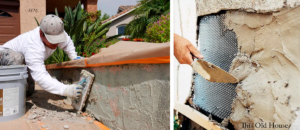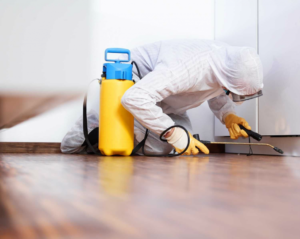A clean space helps to reduce stress, make a home more inviting and boosts productivity. It can also add value to a property. A professional cleaning company can help you achieve these benefits.
Profitable cleaning services include a wide range of options for both residential and commercial properties. These services typically include wiping surfaces, vacuuming, dusting and mopping. Contact All Pro Services now!

Recurring cleaning services are a great way to keep your business clean and organized without adding more work to your schedule. Most cleaning companies offer flexible scheduling options and can customize their services to meet your specific needs. They can also provide additional services, such as deep cleaning and specialized services for hard-to-reach areas. A high-quality company will also keep in contact with you through weekly calls, quarterly reviews, and monthly reports. This will ensure that your clients are satisfied with their service and that any issues can be addressed promptly.
The flexibility of recurring cleaning services is also beneficial to businesses that deal with sensitive information. Keeping a workspace clean can help prevent the spread of germs and bacteria, which can be a major concern for customers. In addition, a well-maintained environment can boost employee morale and productivity. This can improve overall office efficiency and reduce regular absences and turnover rates.
Warehouses are essential to supply chains, and keeping them clean is vital for ensuring the safety of inventory and equipment. Flexible cleaning services allow warehouses to be cleaned in a way that minimizes interruptions to daily operations. This is accomplished by scheduling cleaning activities during off-peak hours or when warehouses are less busy. Moreover, warehouse cleaning services can also be used to address specific cleaning needs, such as sanitising high-traffic areas or tackling unique maintenance challenges.
As more and more people seek convenience and customization, flexible scheduling is a growing trend among professional cleaning services. Many companies offer a variety of services, including window cleaning, carpet cleaning, and floor waxing, and can tailor their services to your specific needs. They can even come to your home to clean your appliances, such as your dishwasher and oven. This service is ideal for homeowners who don’t have the time to do these tasks themselves. It’s important to communicate clearly with your cleaning services about your preferences and priorities, so they can create a customized cleaning schedule for you.
They are environmentally friendly
Unlike traditional cleaning services, eco-friendly cleaners are biodegradable and contain fewer harsh chemicals. They also use energy-efficient equipment and minimize waste. They may also use reusable cloths and microfiber mop heads that are effective in capturing dust and dirt. This helps reduce the need for disposable wipes and paper towels, which are harmful to the environment. Additionally, eco-friendly cleaners will not use any chemical sanitizers or disinfectants that may contribute to air pollution.
Green cleaning is a great way to save the environment, but it’s important to choose the right service for your business. Look for providers that offer a wide range of services and can customize their schedule to meet your needs. Additionally, ask about their sustainable cleaning practices and if they offer any recycling programs. You can also look for certified green companies with Green Seal or Eco-Logo certifications.
The best green cleaning services will be eager to please you and listen to your requirements closely. They will work alongside you to devise a schedule that suits your business, and they will be flexible when it comes to working outside of business hours. In addition, they will be able to mobilise their teams if extra work becomes necessary. Eco-friendly cleaning services also focus on sustainability, reducing environmental harm and encouraging responsible resource use. This includes reducing waste and energy usage, using environmentally friendly cleaning products, and promoting eco-conscious business practices.
In addition to reducing the impact on the environment, eco-friendly cleaning services will also help reduce risks to human health and wellbeing. Conventional cleaning products often release volatile organic compounds into the atmosphere, which can cause skin irritation and respiratory problems for building occupants. The use of eco-friendly cleaners will help to improve indoor air quality and create a safer working environment for staff and customers.
Choosing a green cleaning service will ensure that your business is in compliance with local and federal environmental regulations. These cleaning services will use non-toxic cleaners that are safer for your employees and customers, while also reducing the risk of costly fines and penalties. They will also use energy-efficient cleaning equipment and water-saving toilets, which are vital to preserving fresh water supplies.
They are reliable
Professional cleaning services are a great way to save time and effort while maintaining a clean home or office. They can also provide additional services that aren’t possible or practical to do on your own, including sanitizing surfaces, decluttering, and deep carpet cleaning. They are also trained to handle special tasks, such as mold remediation, and can ensure that your home is safe for you and your family.
Whether you are a busy professional or a stay-at-home parent, hiring a cleaning service can be an excellent investment. In addition to reducing the amount of time you spend on household chores, they can also improve productivity and reduce stress. In fact, a clean environment has been shown to increase mental clarity and focus. A clean workplace can also help boost morale and encourage positive employee behavior.
Many cleaning companies offer flexible scheduling, so you can choose when and how often they come to your home or office. This allows you to customize your services and save money by only paying for the services you need. You can also ask for a quote, so you’ll be sure to get the best price.
While there are many benefits to using a cleaning service, some customers may experience issues with their cleaners. These include inconsistencies in cleaning quality, communication problems, and schedule conflicts. Some services may also have limited customization options, and it can be difficult to communicate specific preferences and instructions.
Another concern is that cleaners might not be trustworthy, and some people worry that they will steal items or break valuables. However, it’s important to find a reputable company that hires their cleaners with thorough background checks. Also, cleaning companies are required to report any stolen or broken items.
Additionally, you should always take the time to inspect your home or office after each cleaning visit. If you have any concerns, be sure to talk with your cleaners about them. In some cases, a simple conversation can make all the difference. You can also give them feedback about the job they’ve done and offer suggestions.
They are trained
Training your cleaning services staff is a vital part of running a successful business. Without it, you risk low employee retention and subpar work. But when you get it right, it can lead to a smoother workflow, higher employee satisfaction, and more repeat customers. The first step is a thorough onboarding process. This includes familiarising new hires with the organisational culture and policies. It also includes clear communication about their roles and responsibilities, which is essential for a productive cleaning team.
Once your cleaners have completed the onboarding program, they should undergo more rigorous training to develop their skills and knowledge. This could include shadowing experienced employees, conducting simulated cleaning scenarios, or reviewing relevant licensing and credentials for specialized cleaning jobs. It’s important to train your cleaning service staff on how to respond to emergencies during a job as well. This can help prevent unnecessary liability and keep your customers safe.
The best way to train your cleaners is to break down the cleaning process into small steps. For example, on the first day, you can teach them how to clean cobwebs and a bathroom. This will give them an idea of how to clean quickly and efficiently. Then, you can train them to vacuum and mop a kitchen. Then, you can teach them how to clean appliances and other items. Finally, you can teach them how to clean windows and mirrors.
A good way to make sure that your cleaning company is fully trained is to use a software app, like Connecteam, to provide on-demand, customized training for your employees. With this app, your employees can access a library of cleaning videos and quizzes, as well as watch introduction videos from the CEO or longtime staff members. It’s easy to update the content and make it more engaging, which will help them retain more information.
Another important aspect of training is to teach your cleaners how to build relationships with clients. This will help them feel confident about working in their clients’ homes, and will create a stronger sense of trust between them. This will help ensure that your cleaning company keeps its customers happy and loyal.






